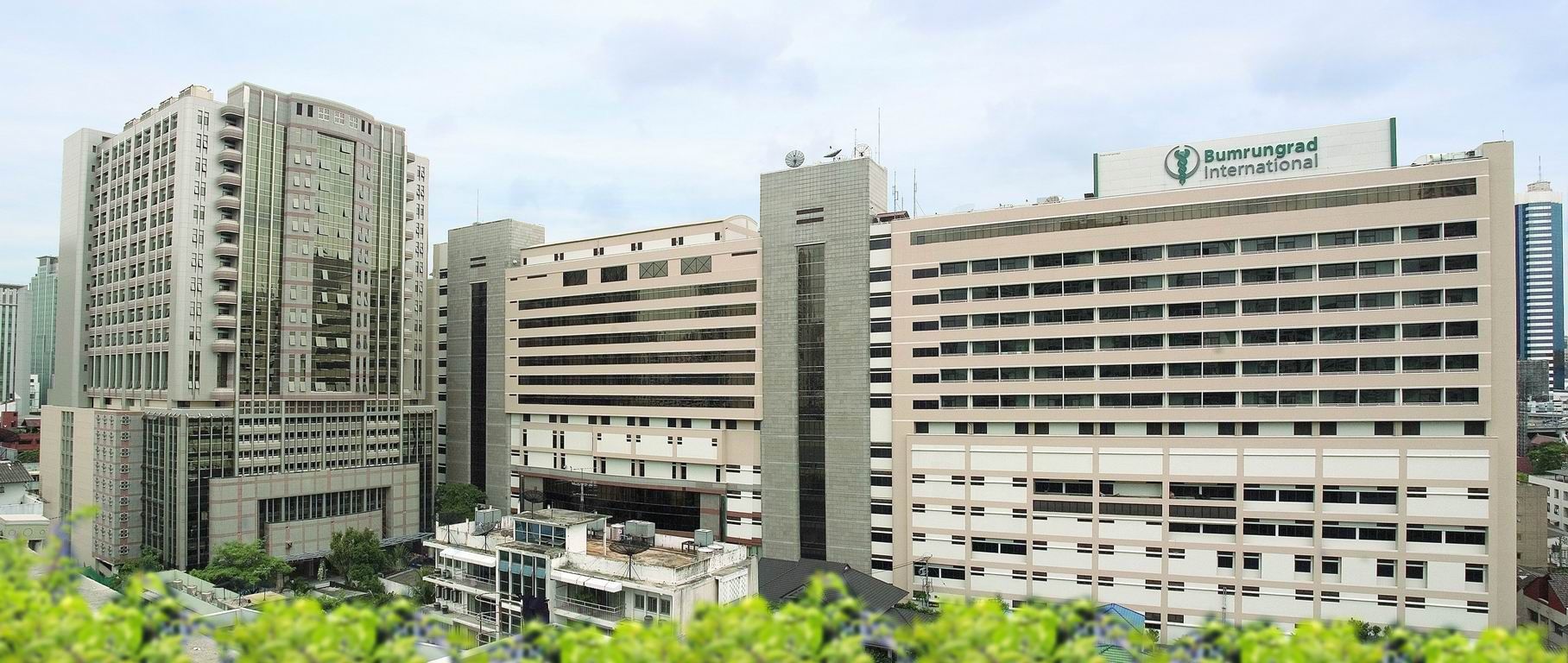Obstetrics and Gynaecology
Laparoscopy and Dye Test Treatment
Laparoscopy and Dye Test
A laparoscopy and dye test is an operation that helps to find out why the patient is having difficulty in becoming pregnant. The dye test will show if the patient’s fallopian tubes are blocked or not. The laparoscopy will help find out if the patient has ovarian cysts, adhesions, endometriosis, pelvic infection, or fibroids. Some minor treatments can be done at the same time.
What is a Laparoscopy and Dye test?
A laparoscopy and dye test is an operation that helps to find out why the patient is having difficulty in becoming pregnant. The dye test will show if the patient’s fallopian tubes are blocked or not. The laparoscopy will help find out if the patient has ovarian cysts, adhesions, endometriosis, pelvic infection, or fibroids. Some minor treatments can be done at the same time.
Benefits of surgery are:
A laparoscopy and dye test may help the doctor to find out the cause of infertility.
Any alternatives to surgery?
An x-ray or an ultrasound test can show if the patient’s tubes are blocked.
What are the complications that can occur?
General complications might include:
- pain
- feeling or being sick
- bleeding
- infection of the surgical site (wound)
- unsightly scarring
- blood clots
Specific complications might include:
- damage to structures such as the bowel, bladder or blood vessels
- developing a hernia near one of the incision
- surgical emphysema
- failure to find out what the problems are
- failed procedure
- infection of the gynecological organs or bladder
Procedure
Once the patients are anesthetized and positioned on the operating table, a small cut of approximately 1cm or less is made into the patient’s belly button and by using a thin needle, a gas is introduced into the abdomen. A telescope with a camera attached to one end is placed into the abdomen and the patient might require one or two small incisions above their pubic hairline for the introduction of other instruments into the abdomen for carrying out the procedure. The idea is to have a good look at the pelvic organs, abdominal organs if required other procedures may also be performed, such as treatment to endometriosis or removal of an ovarian cyst or tubal surgery. Once the doctors have completed the procedure, a non-toxic dye will be introduced through the cervix this gives the doctors a fair amount of idea of patency of the tube also gives a lot more information about the function of the tubes. Once the assessment has been completed and any other procedure has been done, the gas is released, all the instruments are removed and the incisions on the abdominal wall are sutured with dissolvable stitches. In a very rare instance where a non-dissolvable stitch is used, it will be removed on day five. The operative findings will be explained by the doctor to the patient before they go home.
Before the operation
The patients must stop smoking and if they are overweight, they must get their weight down. If the patients have problems with their blood pressure, heart, or lungs, they must consult their family doctor to check that these are under control. The patient must check the hospital's advice about taking the Pill or hormone replacement therapy (HRT). The patients must come with their relative or friend to the hospital, take them home, and look after them for the first week after the operation. Any Sort out tablets, medicines, inhalers that the patients use should be brought to the hospital in their original boxes and packets. On the ward, the patients will be checked for any past illnesses and will have special tests, to make sure that they are well prepared and that they can have the operation as safely as possible. The patients must address any allergies problem to tablets, medicines or dressings to their doctors and nurse.
The procedure of the operation will be explained to the doctors to their patients and will be asked to fill in an operation consent form. Before the patients sign the consent form, they must fully understand all the information that is given to them regarding their health problems, the possible and proposed treatments, and any potential risks. If not the patients must freely ask the queries regarding their health conditions. Any tissues that are removed during the operation will be sent straight for tests to help plan the appropriate treatment, any remaining tissue that is left over after the tests will be discarded. Before the operation and as part of the consent process, the patient will be asked to give permission for any 'left over' pieces to be used for medical research that has been approved by the hospital. It is entirely up to the patient whether they allow this or not. Many hospitals now run special preadmission clinics, where the patients can visit a week or so before the operation, where these checks are made.
After the Procedure
The patients must make sure that they return to their home by car with their relative or friend. At home, they must go to bed and rest for at least six hours. Sometimes there might be some bruising in the skin of the tummy, but this will settle after a week. The patients can take their dressing off the wound while in the bath or shower after three days. The patients can shower and bath but the area of the wounds must be kept dry for a week. The hospital will arrange for the stitches to be taken out but sometimes the stitches are dissolvable and thus are not required to be removed. There may be slight bleeding from the vagina, just like at the end of a period. It will only last for a few days. Only external pads must be used for any loss. Tampons shouldn’t be used. The patients can return to normal activity and work after a week. Heavy exercise must be avoided for a week. The patients can have sex after their next natural period.
Outlook
A laparoscopy and dye test helps to find out the cause of infertility in the female and particularly if the fallopian tubes are blocked. Some minor treatments can be performed along with the laparoscopy and the dye test.
Introduction about Laparoscopy and Dye Test Treatment in India
The laparoscopy and dye tests form an effective system when diagnosing and treating different gynaecological disorders in India. India has sufficient medical facilities along with expertise practitioners, which also enhanced better reproductive health and fertility treatments for the patient.
About Laparoscopy and Dye Test Treatment
A laparoscopy and dye test is an operation that helps to find out why the patient is having difficulty in becoming pregnant. The dye test will show if the patient’s fallopian tubes are blocked or not. The laparoscopy will help find out if the patient has ovarian cysts, adhesions, endometriosis, pelvic infection, or fibroids. Some minor treatments can be done at the same time.
Need for Laparoscopy and Dye Test Treatment
Laparoscopy and dye test treatments become necessary due to a number of conditions that may be associated with the female reproductive system. Here are some key reasons why these procedures are important:
- Diagnosis of Infertility
- Treatment of Endometriosis
- Ovarian and Uterine Cysts
- Pelvic Adhesions
- Hysterectomy and Other Surgical Needs
- Safety and Recovery Benefits
- Patient Empowerment and Decision Making
Symptoms Leading to Laparoscopy and Dye Test Treatment
There are numerous signs and ailments that may cause a gynaecologist to refer a patient for laparoscopy and dye test treatments. Here are some of the key symptoms that can indicate the need for these procedures:
- Infertility
- Pelvic Pain
- Abnormal Menstrual Cycles
- Ovarian Cysts
- Symptoms of Endometriosis
- Adhesions from Previous Surgeries
- Signs of Infection
- Uterine Abnormalities
What are the complications that can occur?
General complications might include:
- pain
- feeling or being sick
- bleeding
- infection of the surgical site (wound)
- unsightly scarring
- blood clots
Specific complications might include:
- damage to structures such as the bowel, bladder or blood vessels
- developing a hernia near one of the incision
- surgical emphysema
- failure to find out what the problems are
- failed procedure
- infection of the gynecological organs or bladder
Causes Leading to Laparoscopy and Dye Test Treatment
Due to various primary causes and medical conditions, laparoscopy and dye test treatment is recommended for women, some of them potentially concerning reproductive system. Here are some common causes:
- Infertility
- Pelvic Pain
- Uterine Abnormalities
- Adhesions
- Pelvic Inflammatory Disease
- Endometriosis
- Ovarian Issues
- Diagnostic Uncertainty
Facilities and Services offered for International Patients for Laparoscopy and Dye Test Treatment
The healthcare facilities are rapidly increasing and choosing India as a destination for international patients for laparoscopy and dye test treatment. These centres provide the following services; online consultation, visa, accommodation, language, care coordination, sophisticated diagnostic and operating facilities, post-operation care and review, affordable and competitive charges, culturally sensitive treatment, cleanness, and health safety measures. These services are meant to provide foreign patients with a comfortable and productive stay while being treated to the best conditions. In addition, the facilities also aim to cater for cultural and diet of the international patients hence providing for a comfortable stay.
Diagnostic Tests for Laparoscopy and Dye Test Treatment
Diagnostic tests are mandatory before laparoscopy and dye test treatments because they help the physician to diagnose potential causes of pain and to evaluate overall reproductive health. Here are some common diagnostic tests that may be performed prior to these procedures:
- Pelvic Ultrasound
- Hysterosalpingography (HSG)
- Sonohysterography (SHG)
- Laparoscopy with Chromopertubation
- Blood Tests
- Endometrial Biopsy
- MRI or CT Scan
Success Rate of Laparoscopy and Dye Test Treatment
Laparoscopy and dye test treatment in general have good success rate especially for the treatment of infertility and relief of gynaecological problem symptoms. This treatment’s success rate can range from 30% to 70% relying in the cause of infertility as well as the process that was done on the patient. It highlighted success determinants such as age and health, the type of condition as well as the individual circumstances of the patient concerned.
Laparoscopy and Dye Test Treatment Recovery
In general, laparoscopy and dye test treatment recovery is uneventful and easily controlled; majority of patients give very encouraging accounts of relief of symptoms and general well-being. Patients must follow certain post-operative instructions dictated by their physicians; attend their follow-up appointments or come in earlier in case of complications. In addition to knowledge of the laparoscopy and dye test treatment recovery process contributing to the daily well-being of a patient, getting useful information about the process is important in order to reduce expectations and thus help to cope with the situation.
Do’s
- Do follow pre-operative instructions
- Do discuss medical history
- Stay Hydrated
- Do follow post-operative instructions
- Monitor your symptoms
- Maintain a Healthy Diet
Don’ts
- Don’t Eat or Drink Before the Procedure
- Don’t Smoke or Use Alcohol
- Don’t Ignore the symptoms
- Don’t Skip Follow-Up Appointments
- Don’t Hesitate to Seek Help
Best Hospitals for Laparoscopy and Dye Test Treatment
- Fortis Memorial Research Institute, Gurgaon
- Medanta The Medicity, Gurgaon
- Artemis Hospital, Gurgaon
- Max Hospital, Saket, New Delhi
- Apollo Hospital, New Delhi
Best Doctors for Laparoscopy and Dye Test Treatment
- Dr. Mamta Pattnayak
- Dr. Preeti Rastogi
- Dr. Renu Raina Sehgal
- Dr. Anuradha Kapur
- Dr. Madhu Roy
Why Choose Get Well Go for Laparoscopy and Dye Test Treatment?
There are several benefits for the international patients to opt for Get Well Go for laparoscopy and dye test treatment. Here are some key reasons why Get Well Go is an excellent choice:
- Patient-Centric Approach
- Comprehensive Patient Care
- Expert Medical Team
- Affordable and Transparent Pricing
- Medical Visa Assistance
- Accommodation
- Convenient Travel Arrangements
- Follow-up Care and Telemedicine
Conclusion
This treatment is used for gynaecological conditions for instance infertility and pelvic pain. Laser surgical interventions contribute toward understanding the reproductive system; have a short postoperative rehabilitation period, and better prognosis. The dye test determines the fitness of the fallopian tubes and there by improves the conception possibilities. The health care providers such as Get Well Go have professional medical experts and tailored infrastructure and resources. They together enable the patients take control of their reproductive lives.
FAQs
1. What is a laparoscopy and dye test all about?
- A laparoscopy and dye test is actually a straight surgical operation that assists in determining the reason for infertility and other related issues. It entails having small cuts on the belly to have a telescope and tools for surgery, and also injecting a dye into the uterus and tubes.
2. During the procedure what do the surgeons do?
The procedure is normally done under general anaesthesia and may take between 15-30minutes. The surgeon will:
- Cut a small hole on the belly and another slightly lower, above the hair line of the bikini.
- Injecting carbon dioxide into the abdomen cavity to inflate the abdomen.
- Place a small telescopic tube with small light source and camera through one of the incisions.
- Fill the uterus and fallopian tubes with dye from the cervix.
- To reduce risk, get physical exam and have a close look at the uterus, fallopian tubes and other related organs.
- Perform any minor procedures.
- When closing the operations, it is good to leave the incisions open but cover them using surgical glue or, suture them using dissolvable strings.
3. What are the consequences of the procedure?
- Normal recovery involves some amount of discomfort for a certain period after surgery, but it should not be severe. And for at least a day or two after the procedure you really shouldn’t do too much and you shouldn’t consume alcohol for at least one day. Another thing you should do is to ensure that the area where the incisions are made is clean, and does not come into contact with water.
4. What complications can occur?
Like in most surgical procedures, there are cases that bad things can happen after surgery though it is very rare. You should contact your doctor right away or go to the nearest emergency room if you experience any of the following:
- Fever
- Heavy vaginal bleeding
- Worsening or severe pain
- Fainting
- Infection of the incisions
- Looking at one or both of the patients being forced not to use the washroom as per their wish
TREATMENT-RELATED QUESTIONS
GetWellGo will provide you end-to-end guidance and assistance and that will include finding relevant and the best doctors for you in India.
A relationship manager from GetWellGo will be assigned to you who will prepare your case, share with multiple doctors and hospitals and get back to you with a treatment plan, cost of treatment and other useful information. The relationship manager will take care of all details related to your visit and successful return & recovery.
Yes, if you wish GetWellGo can assist you in getting your appointments fixed with multiple doctors and hospitals, which will assist you in getting the second opinion and will help you in cost comparison as well.
Yes, our professional medical team will help you in getting the estimated cost for the treatment. The cost as you may be aware depends on the medical condition, the choice of treatment, the type of room opted for etc. All your medical history and essential treatment details would be analyzed by the team of experts in the hospitals. They will also provide you with the various types of rooms/accommodation packages available and you have to make the selection. Charges are likely to vary by the type of room you take.
You have to check with your health insurance provider for the details.
The price that you get from GetWellGo is directly from the hospital, it is also discounted and lowest possible in most cases. We help you in getting the best price possible.
No, we don't charge patients for any service or convenience fee. All healthcare services GetWellGo provide are free of cost.
Top Doctors for Obstetrics and Gynaecology
Top Hospitals for Obstetrics and Gynaecology
Contact Us Now!
Fill the form below to get in touch with our experts.

.png)





